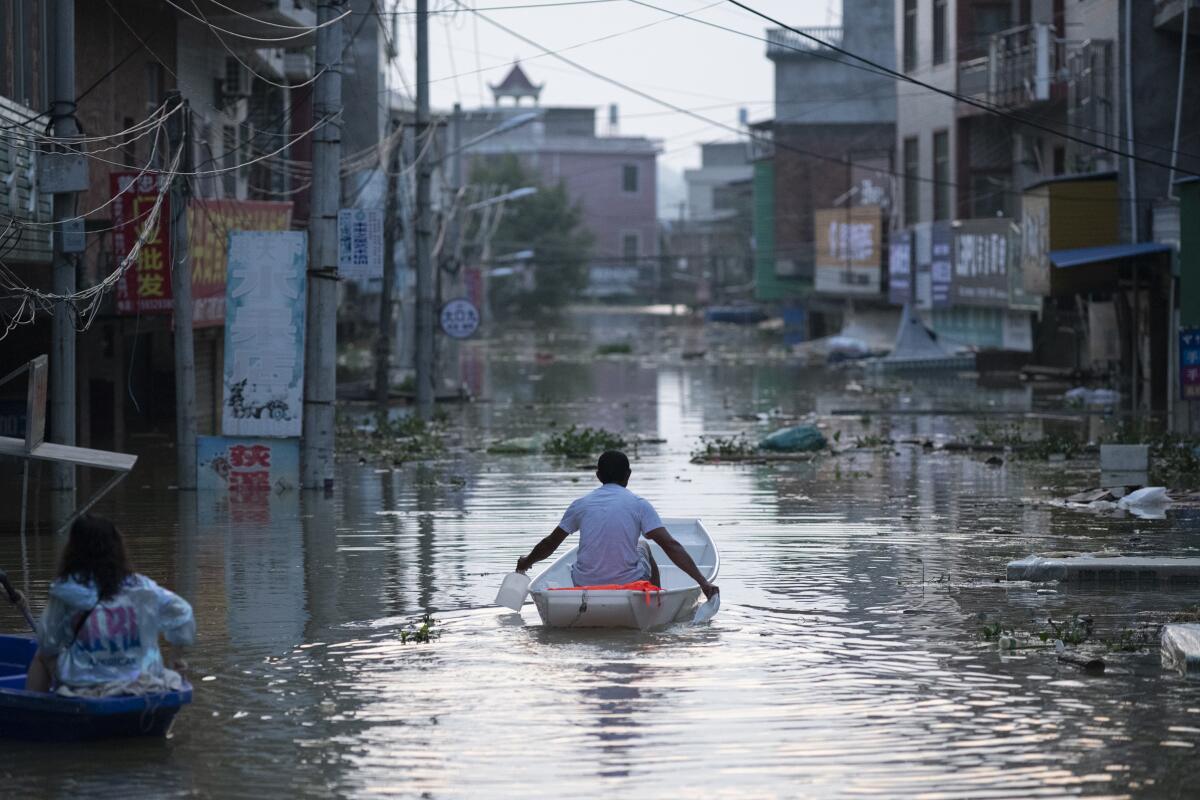Editorial: Climate change is driving extreme floods, wildfires and heat. Will the world meet the moment?

- Share via
The summer isn’t even halfway through and it’s already proved to be a season of deadly extremes.
In a little over a month, four major heat waves have broiled the Western United States, including record-shattering triple-digit temperatures in Oregon and Washington that caused hundreds of heat-related deaths.
Wildfires are again tearing through the West, burning hundreds of thousands of acres in California, Oregon and British Columbia in Canada. The fires are so massive that smoke has traveled all the way to the East Coast, prompting health warnings in Connecticut and Maryland and turning the skies above New York City hazy and red.
And from Germany to China, extreme flooding has caused death and destruction. At least 180 people in Germany, Belgium and the Netherlands were killed last week when two months’ worth of rain fell in two days, causing floods and mudslides. In the central Chinese province of Henan, at least 33 people died after riders were trapped on a subway amid catastrophic flooding after torrential rains.
These terrifying scenes from across the globe have long been predicted by scientists studying our warming planet. Higher temperatures would lead to more heat waves and droughts in some areas that would fuel bigger, more frequent wildfires. In other areas the warmer climate would trap moisture in the atmosphere, leading to heavier rainfall during storms.
Climate change is making normal weather events — heat waves, droughts, rainstorms and hurricanes — more extreme and more devastating to communities unprepared for the onslaught. What’s most frightening, however, is that extremes are happening faster than many predicted or wished. It’s clear that the world is running out of time to slow the devastation.
The impacts of climate change are undeniable. So why are the world’s developed countries still slow-walking efforts to wean their economies off fossil fuels and slash the greenhouse gases responsible for climate change?
Last year, a United Nations report warned that the world needs to triple promised reductions in carbon emissions to limit global warming to 2 degrees Celsius to prevent dire consequences, including famine and widespread flooding. But, according to another U.N. report, instead of cutting fossil fuel production, countries were planning to increase production.
Few corners of the U.S. have been spared the impacts of extreme weather, yet members of Congress are still squabbling over funding for clean energy projects and reducing the nation’s dependence on fossil fuels. President Biden has proposed an expansion of funding and programs to curtail oil and gas production, promote zero-emission vehicles and invest in renewable energy. But Biden needs a cognizant, cooperative Congress to make these long-term shifts in policy stick.
The European Union and China have also proposed sweeping plans to curtail emissions. The EU is considering legislation to phase out gasoline and diesel cars and impose tariffs on imports from polluting countries. China announced plans for a cap-and-trade-like system for high-polluting companies in the country; companies would ratchet down emissions over time. But there is no guarantee these proposals will come to fruition or quickly deliver emissions reductions.
As the last few weeks have shown, there’s no time to waste. The summer has already given a terrible glimpse of the future if we don’t change course now.
More to Read
A cure for the common opinion
Get thought-provoking perspectives with our weekly newsletter.
You may occasionally receive promotional content from the Los Angeles Times.










